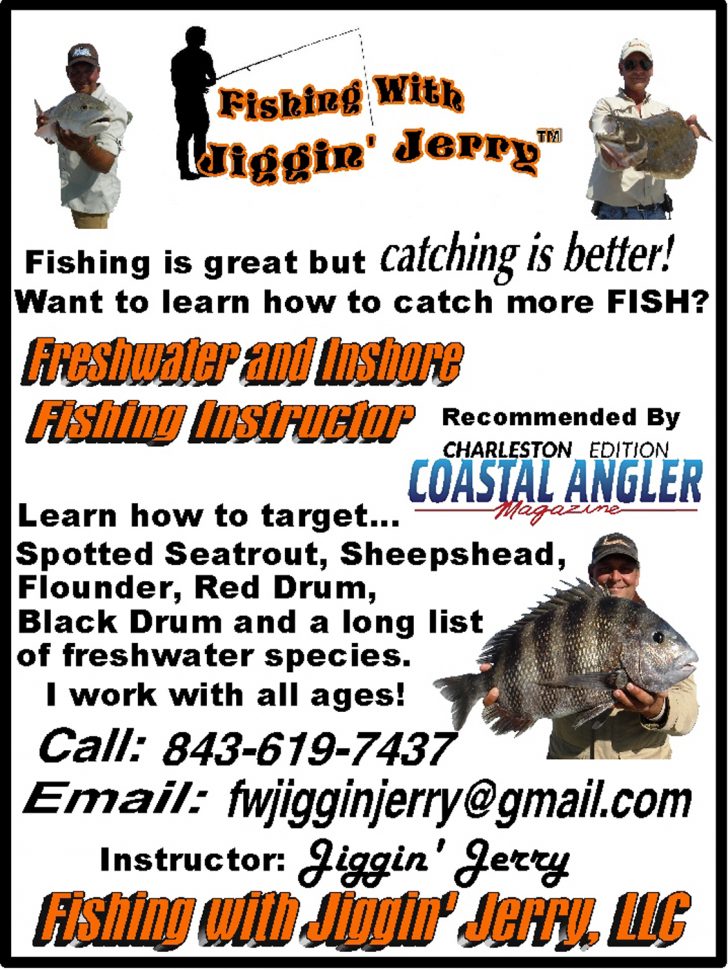For a lot of inshore fishermen, using artificials has quickly become a favorite when targeting our inshore slam.
The three well known game fish — the Red Drum, Flounder, and of course, Spotted Seatrout.
When it comes to these three game fish, all of them will target artificial Shrimp, Paddle Tail Grubs, Curly Tail Grubs, crankbaits, topwater plugs, poppers and others.
Of course, choosing which bait to use at which time has a lot to do with water color, water depth, water speed (whether flowing or still) and location.
As we approach fall, September, October and November are three of our favorite months to use artificials.
Inexperienced fishermen and a lot of anglers who have just not learned the ins and outs of using artificials may believe that using the majority of these artificials is as simple as casting it out and just reeling it in.
There have been plenty of times that I have fished with seasoned anglers while fishing with the same lures at the same time, and my luck had been pretty good.
As I look over at the other angler, I hear the same common question asked: What are you doing that I am not?
“We are both fishing the same lure in the same place, but you have caught 10 fish to my 3!”
The trick is to make his lure look alive to attract the fish to make the fish believe his lure is real
And believe you me, this is not myself trying to brag, this is just a day on the water doing what I know how to do.
I would like to share the answer to that question with you. I call it, “The Puppeteer Fisherman.”
A puppeteer is an individual that has trained himself in the art of controlling marionettes.
A marionette is a doll that could be anything that one could imagine—a puppet that imitates a person or a dog, cat, monkey or fish, etc.
A puppeteer uses a wooden control bar with strings attached from it to the marionette, and with this control bar, he attempts to lure in his audience by making the marionette look alive and real, entertaining and luring in the public.
A puppeteer fisherman has the same task. His wooden control bar is his fishing rod.
His artificial lure is his marionette, and he only has one string from his rod to his lure.
A puppeteer fisherman has the same task. His wooden control bar is his fishing rod
The trick is to make his lure look alive to attract the fish to make the fish believe his lure is real, therefore, enticing the game fish in a hunger strike, believing the dance of his lure is life like.
Whether or not you are using an artificial that looks like a Finger Mullet or one that looks like an artificial Shrimp.
When watching both of these creatures in real life, their movements are completely different and only similar in a small fashion.
Yes, both the Mullet and the Shrimp can bob up and down in the current, and yes, both can dart in a straight line.
The Shrimp in a short distance and the Mullet in a long distance.
These movements would be considered similar, but a Shrimp can walk along the bottom or structure.
A Shrimp can also enter a fleeing motion, which enables the Shrimp to propel backwards quickly.
A Shrimp can either move slowly through the water paddling forward or dart sporadically left to right, up and down, when either startled or in fast current.
A Finger Mullet moves in large or tight circles, will dart left to right in an elongated pattern, will make quick descents to the bottom to take cover or leap out of the water when in fear of a predator.
Even the Shrimp are known to jump out of the water sporadically with great leaps when startled by a predator, and these are just two artificials of many.
The fun of using artificials is learning how to make each one of them imitate the creature that they are mimicking.
It becomes the angler’s job to learn how to use his fishing rod.
Practicing movements of the wrist, twitching the rod either fast or slow with pauses, shaking the rod, even tapping the rod with the opposite hand while the line is tight to generate a quivering action all the way down the line to the lure.
Once realized, studied and practiced, fishing with artificials no longer becomes the simple thought or idea of just casting out a line and reeling it in, hoping a hungry fish bites.
It becomes art. It becomes a sport that involves work and mastering, like a dancer or gymnast and even a puppeteer.
The reward is the landed fish that you have entertained and tricked into believing!
So, if you are heading out on the water this fall, or any time of the year, and you plan on using artificials..
Take a little time and have some fun throwing your lure into clearer water and observing the actions of your lure while you are operating it.
See how you can make your lure look alive. You will be surprised at how much fun it can be and how much more success you could have while fishing.
I hope this helps. Like I always say, good luck out there and have fun fishing!
To view some fishing adventures, go to my YouTube Channel Fishing With Jiggin Jerry.
LEAVE COMMENTS AT THE BOTTOM!
You may also enjoy reading Artificial Intelligence ~ Tools Of The Trade








